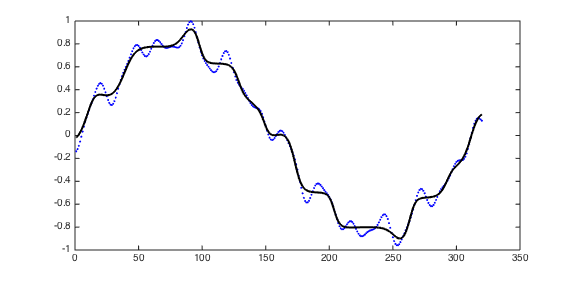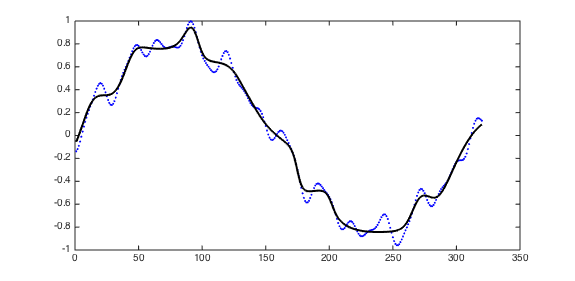LSTM Implementation in Caffe
Note that Jeff Donahue's implementation will be merged to Caffe (not this code).
Jeff's code is more modularized, while this code is optimized for LSTM.
This code computes gradient w.r.t. recurrent weights in a single matrix computation.
-
Speed comparison (Titan X, 3-layer LSTM with 2048 units)
- Batch size = 20, Length = 100
Code Forward(ms) Backward(ms) Total (ms) This code 248 291 539 Jeff's code 264 462 726 - Batch size = 4, Length = 100
Code Forward(ms) Backward(ms) Total (ms) This code 131 118 249 Jeff's code 140 290 430 - Batch size = 20, Length = 20
Code Forward(ms) Backward(ms) Total (ms) This code 49 59 108 Jeff's code 52 92 144 - Batch size = 4, Length = 20
Code Forward(ms) Backward(ms) Total (ms) This code 29 26 55 Jeff's code 30 61 91
An example code is in /examples/lstm_sequence/.
In this code, LSTM network is trained to generate a predefined sequence without any inputs.
This experiment was introduced by Clockwork RNN.
Four different LSTM networks and shell scripts(.sh) for training are provided.
Each script generates a log file containing the predicted sequence and the true sequence.
You can use plot_result.m to visualize the result.
The result of four LSTM networks will be as follows:



